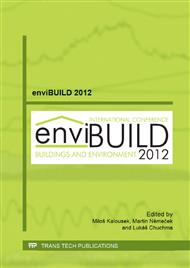p.227
p.231
p.236
p.242
p.246
p.250
p.254
p.258
p.262
Greening of Concrete Industry by Incorporating Gypsum-Based Industrial Wastes as Supplementary Cementitious Materials
Abstract:
The paper presents some preliminary results on using a new supplementary Cementitious material based on industrial by-products most of them unrecyclable until recently. The opportunity for using such industrial unrecyclable wastes in construction industry has recently been recognized by researchers as having net benefits for the environment. This strategy has the potential to reduce costs, conserve energy and minimize waste. The concept very much fits into the era of sustainable development. In view of this fact, the effect of curing conditions on the self weight and strength characteristics of an eco-mortar is studied and preliminary encouraging results are presented. The eco-cement, in the form of anhydrous calcium sulphate, is set to replace the ordinary Portland cement in the mix proportion. It is made from industrial wastes and can be entirely recycled after its expiration date. The curing conditions consisted in air curing for 28 days or various time intervals for curing in water until the day of testing. The strength properties at the age of 28 days are investigated in terms of bending tensile strength and compressive strength. The obtained results show that the curing conditions play an important role both on the self weight and on the strength characteristics.
Info:
Periodical:
Pages:
246-249
Citation:
Online since:
January 2013
Price:
Сopyright:
© 2013 Trans Tech Publications Ltd. All Rights Reserved
Share:
Citation:


